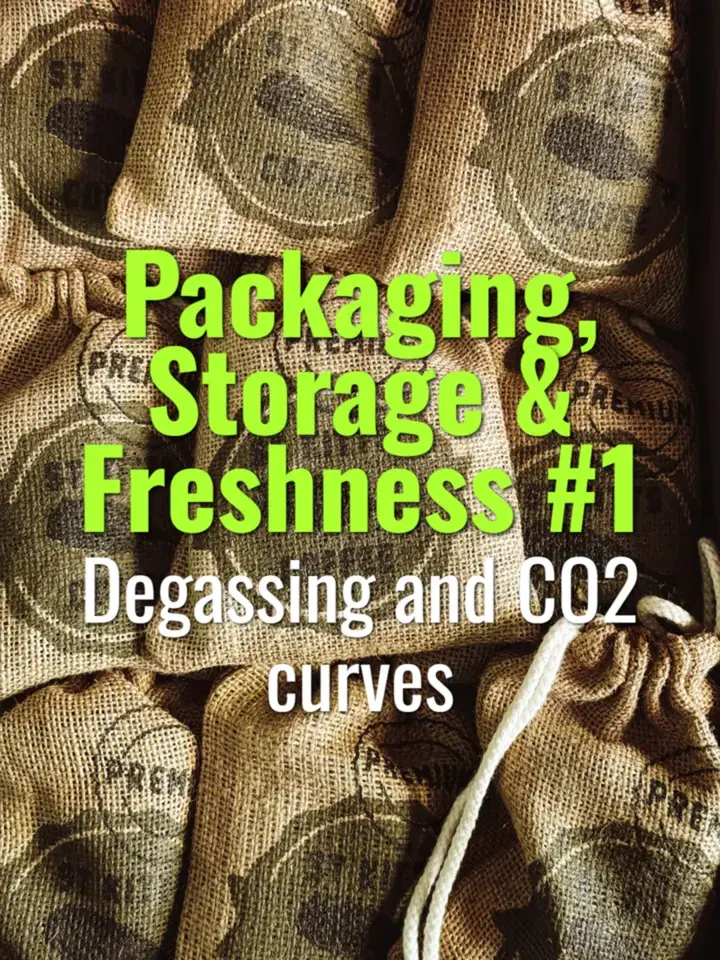Degassing and CO2 curves
How roasted coffee degasses CO₂ over time, why it matters for freshness, and how to manage storage and brewing around degassing curves.
- Coffee Basics Nerds
- 2 min read
Article 1 of 12 in Packaging, Storage & Freshness/

What is Degassing?
- During roasting, coffee beans undergo pyrolysis, generating carbon dioxide (CO₂).
- After roasting, beans gradually release CO₂—a process called degassing.
- Degassing affects freshness, brewing performance, and flavor development.
The CO₂ Curve
- Rapid Phase: First 24–72 hours → ~40–50% of CO₂ escapes.
- Slower Phase: Next 1–3 weeks → gradual decline.
- Stable Phase: After ~4–6 weeks, most CO₂ is gone; beans risk staling from oxygen exposure.
Why Degassing Matters
- Brewing Quality:
- Too much CO₂ → uneven extraction, excessive blooming, foamy espresso crema.
- Too little CO₂ → flat, stale flavor.
- Packaging:
- Coffee bags use one-way valves to allow CO₂ out while preventing oxygen in.
- Freshness Indicators:
- Bloom in pour-over or crema in espresso can signal degassing stage.
Practical Guidelines
- Resting Periods:
- Espresso: 5–14 days post-roast (balance crema and flavor).
- Filter: 2–7 days post-roast (reduce excess bloom).
- Storage: Airtight, cool, dry, away from light.
- Batch Planning: Roast dates should align with ideal resting periods for brewing method.
Visualizing CO₂ Curves
- Curves typically show a steep initial drop, then a long, shallow decline.
- Useful for roasters to anticipate shelf life and recommend optimal brew windows.
Summary
Coffee beans release CO₂ along a degassing curve, with rapid release in the first days and slower decline afterward. Managing degassing ensures optimal brew performance, flavor expression, and freshness—making CO₂ awareness key to storage and brewing strategy.